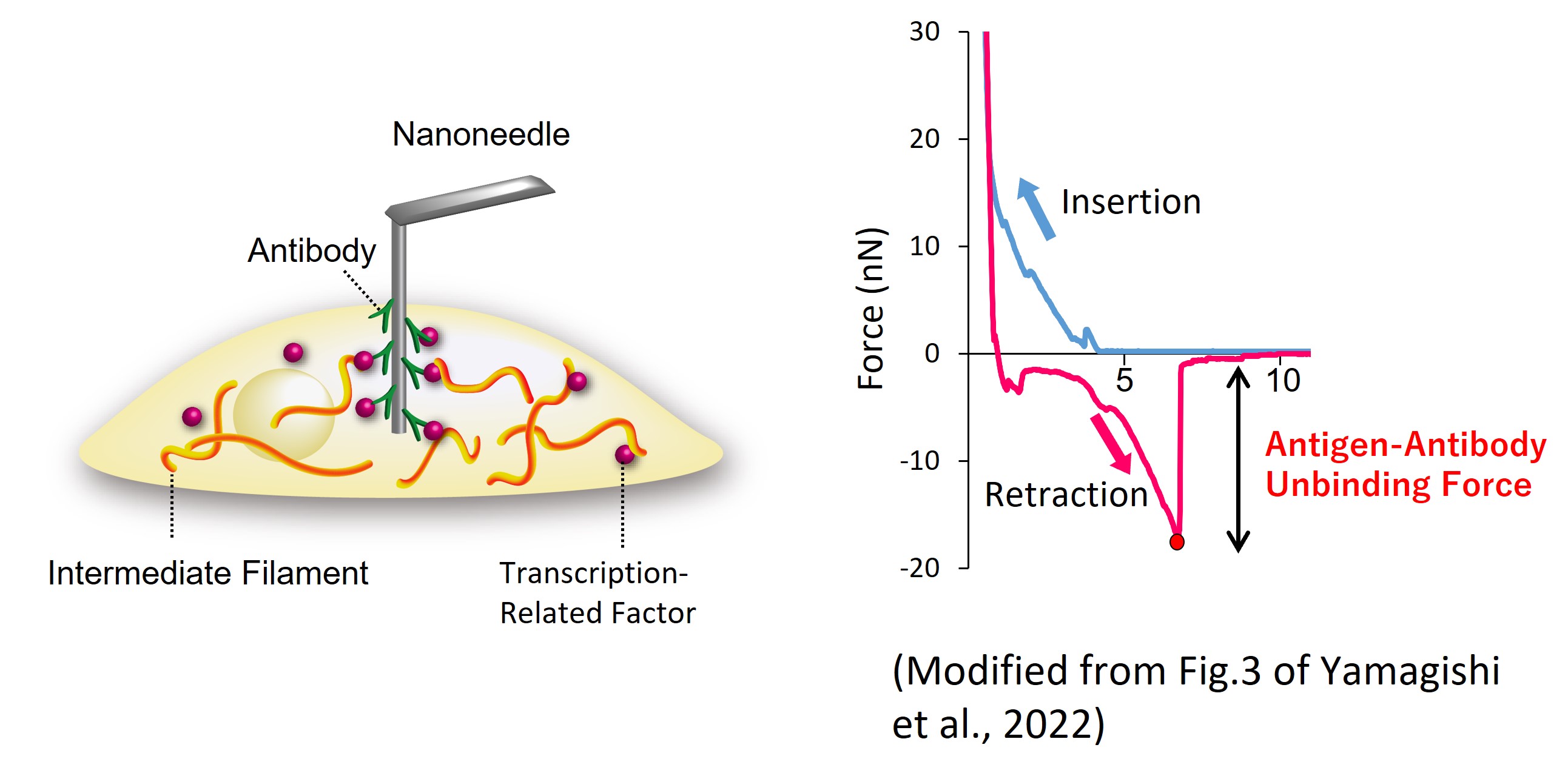Technology to Detect Transcription-Related Factors Bound to the Cytoskeleton in Living Cells
Ayana Yamagishi, Chikashi Nakamura, and colleagues successfully used atomic force microscopy and antibody-functionalized nanoneedles to mechanically detect transcription-related factors that are bound to intermediate filaments in living cells. Nanoneedles with a diameter of 200 nm fabricated from atomic force microscope probes cause little damage to cells upon insertion, and enable precise position control and detection of mechanical response. If a protein interacting with the cytoskeleton in the cell is bound to an antibody on the surface of the inserted nanoneedle, the antigen-antibody unbinding force should be observed when the needle is retracted. By measuring this unbinding force, they showed that the transcription-related protein PHB2 is bound to intermediate filament vimentin, which is used as a marker of epithelial-mesenchymal transition. Recently, it has been suggested that intermediate filaments regulate gene expression by trapping transcription-related proteins and preventing their translocation into the nucleus. The technology developed here, which enables detection of protein-protein interactions without labeling, is expected to contribute to the elucidation of this process.
Detection by atomic force microscopy of the force to break the binding between antibodies on the surface of a nanoneedle inserted into the cell and transcription-related factors trapped by intermediate filaments.

Publication
- Title: Mechanical detection of interactions between proteins related to intermediate filament and transcriptional regulation in living cells
- Authors: Ayana Yamagishi, Mei Mizusawa, Koki Uchida, Masumi Iijima, Shun'ichi Kuroda, Kyoko Fukazawa, Kazuhiko Ishihara, Chikashi Nakamura
- journal: Biosensors and Bioelectronics
- DOI: 10.1016/j.bios.2022.114603
Collaboration
- Joint research with Tokyo University of Agriculture and Technology, The University of Tokyo, Osaka University, and Tokyo University of Agriculture.